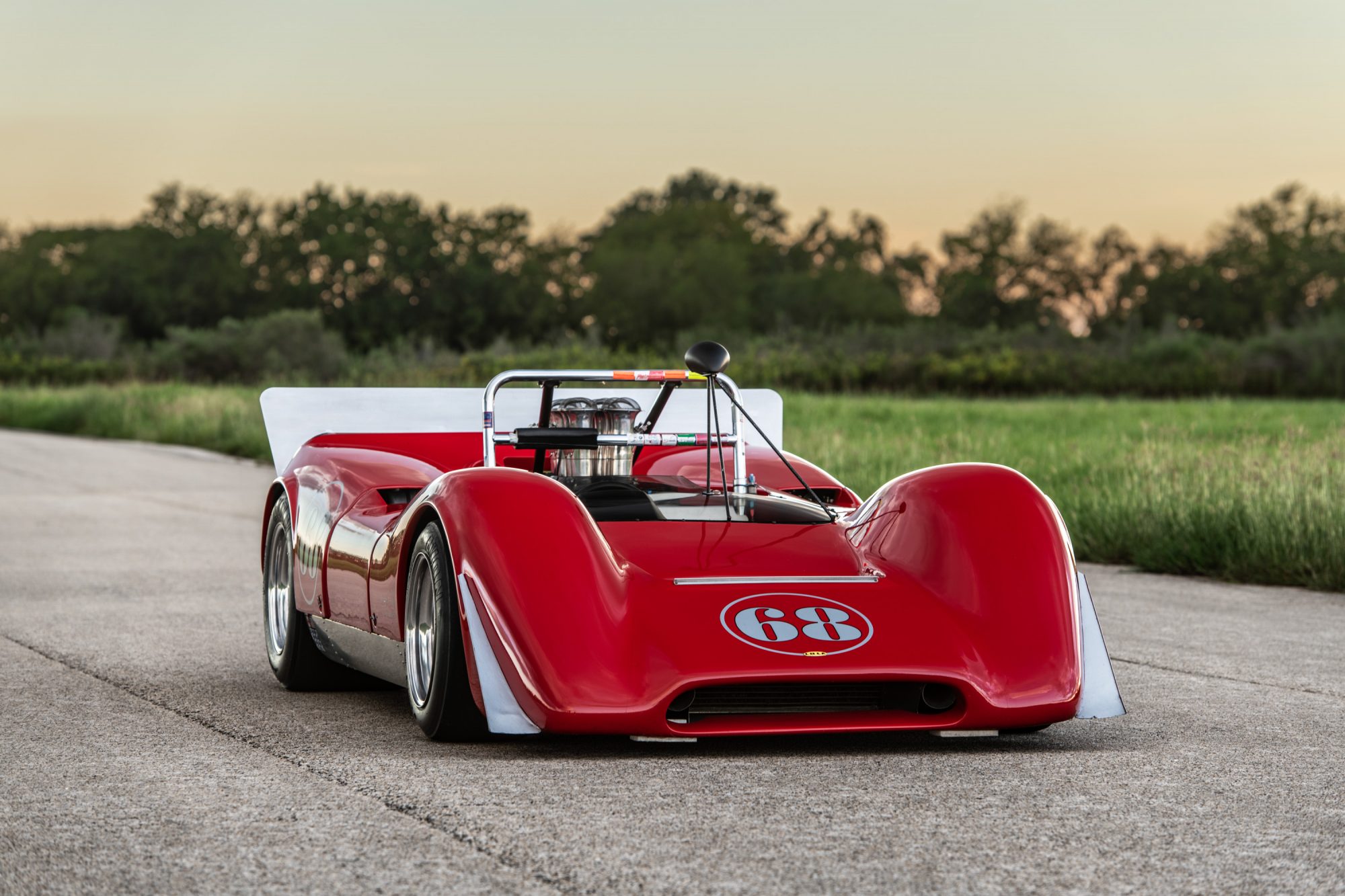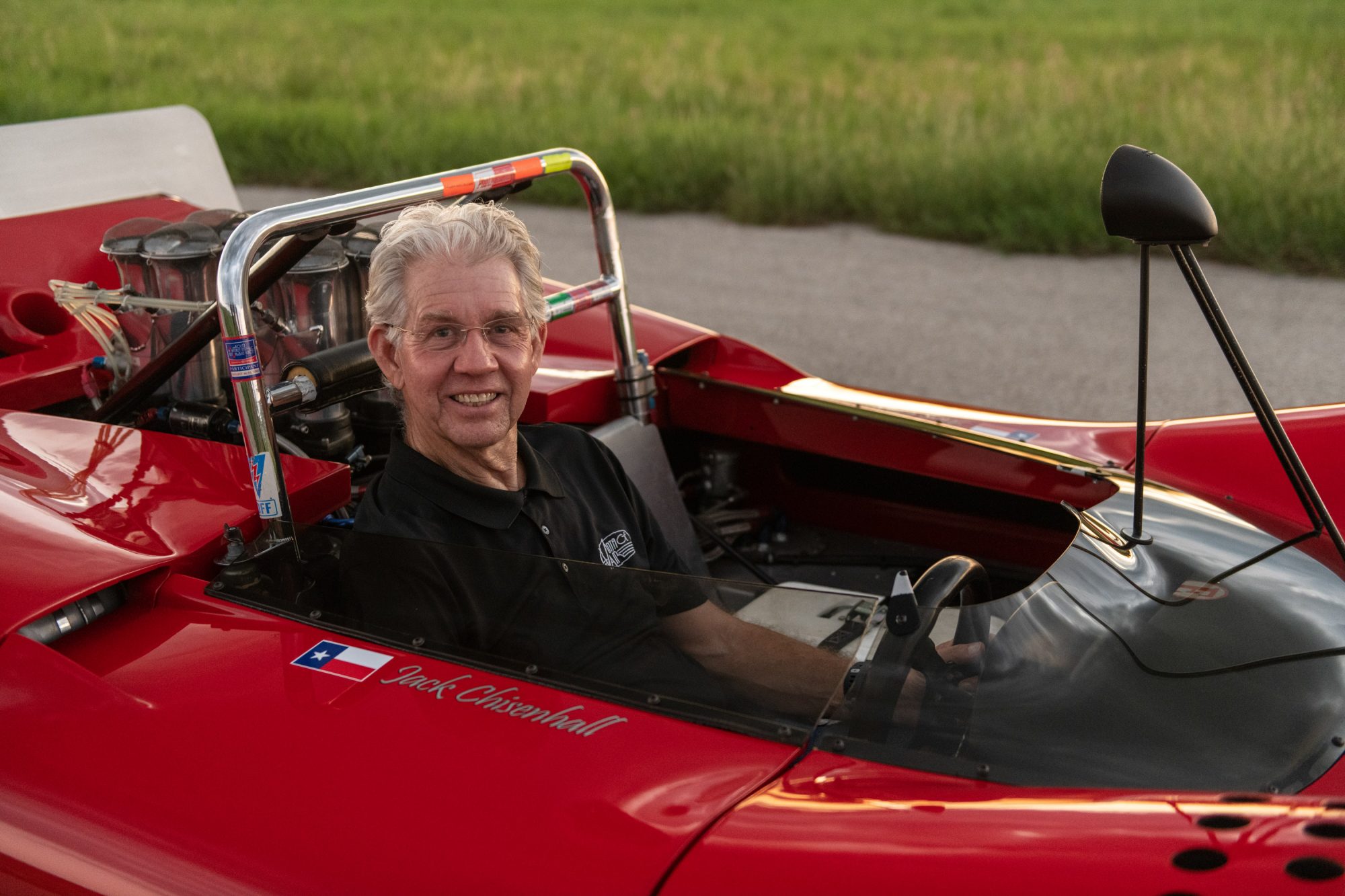

This Lola T160 Is A Perfectly Preserved Relic From The North American War
Story by Jeremy Malcolm
Photography by Drew Phillips
If Formula 1 was a well-sanctioned prize fight, the Canadian-American Challenge Cup would be a no holds barred brawl in the backyard. Can-Am was a unique series in motorsport history, combining massive investments from some of the biggest racing teams in the world with very few rules restricting performance or safety. This was a blessing and a curse, allowing the series to quickly skyrocket in popularity before crashing down due to ballooning costs and safety concerns.




While Can-Am’s flame burned briefly, it did burn brightly, and in the mid ‘60s Lola was trading punches with the biggest names in racing. Company founder Eric Broadley was engineering some of the most potent chassis of the era, and when paired with American V8s his cars were near bulletproof. Ford took notice and famously hired Broadley to help develop its then-new GT40 from one of his Lola GTs, putting the rest of development and production on hold for a year. Upon Broadley’s return to Lola full time following his work on the Ford project, he created what would become the crowning achievement of the company, the Lola T70. This car would go on to humble the racing world, ultimately taking the championship in the inaugural season of Can-Am in 1966. But in the off-season, competitors began prodding at the rule book looking for loopholes to take advantage of, and with that the Can-Am arms race took off and the T70 went from the top of the field to a mid-pack contender that was trading punches with the top European constructors.





Broadley knew the successor to the T70 would need to follow the same basic philosophy of a lightweight chassis with a burly American engine, but it would need more power, more tire, and improved road holding. He named the new car the T160, and despite a resemblance to its predecessor it was almost entirely new. Just a dozen of the cars were built, each with an American V8 engine—sometimes a Ford but usually a fuel-injected Chevrolet fitted with mechanical individual runners.
Weighing in at just 1,600 pounds and producing just shy of 700 horsepower made the little Lola a handful to drive, with a power-to-weight ratio besting even the top F1 cars of the time. The T160 proved itself in battle and secured a handful of top-five finishes, but by this time other manufacturers—including McLaren and Porsche—had figured out the Lola formula, and victories were harder to earn.







In 1972 Porsche unveiled its turbocharged 917/10 with Roger Penske managing the program and Mark Donohue behind the wheel, and the car, while suffering from some teething problems, changed everything. Naturally-aspirated lightweight V8-powered cars simply couldn’t compete with the insane numbers the Stuttgart cars were capable of producing from their boosted flat-twelves. For 1973, Porsche, with Penske’s and Donohue’s help, sorted out the issues with the 917/10 and the result was the mythical and just about unbeatable 917/30 that produced over 1200 horsepower when it was time for qualifying. The car was such a dominant force in in Can-Am that the other teams were quick to protest, and the series’ answer was an imposed fuel limit for the 1974 season, which effectively banned the Porsche and alienated fans, ultimately killing the series.
Looking back on this unique period of road racing, it’s easy to focus on the fire-breathing P-cars and their dominance in the waning days of Can-Am, but to many fans the true heyday were those first few years when privateer teams could compete—and win!—while driving elegant and undeniably beautiful aluminum monocoque sports cars stuffed with big lumps of American muscle behind the cockpit. Developed without the benefit of CAD software and corporate R&D budgets, the early Lolas are some of the prettiest, quickest, and best sounding sports cars of their era. The fact that they’re still available, have dozens of vintage races where they can be driven in, and are (relatively) affordable is an added bonus.





This brings us to the car at hand, the 12th and final 1968 Lola T160 manufactured. The car was originally purchased from Carl Haas (the Lola factory importer for the U.S.) by Jon Crean for film star James Garner’s American International Racers (AIR) Team, which had been successfully running Lola T70s in endurance racing competition. The car was intended to be a backup and was never used, as shortly after it was delivered to them, the team switched to Gurney’s Eagle Formula 5000 cars.
So T160 #12 sat untouched, and when the series ended in 1975 the still-new race car had never touched a track for competition. A decade after its construction the car was purchased by Tony Seinenger, who used it to compete in SCCA A/SR competition. It then moved on to vintage racer Dan Martin, who recognized the car’s beauty and impeccable prep work and began using it to compete in the earliest California Historic races (the Steve Earle era).
After seven years of respectful vintage racing, the car was sold to Lief Nielson, who shipped it across the pond to Sweden and put it in a museum—but the little Lola wasn’t destined to sit in storage long, and it was brought back to the U.S. just a few years later. At this point, the car, which was still running its factory configuration down to the injection, had its motor and suspension refreshed and it’s found a longtime home now where it competes regularly in historic competition.




Its current custodian is noted vintage racer, land speed record-holder, and automotive aftermarket innovator Jack Chisenhall, the founder of Vintage Air and driver of the well-known “Cool 200” 1953 Studebaker that made it into the 200mph Club with the air conditioning on at the Bonneville Salt Flats. Chisenhall, who is well known in hot rod circles for his immaculate street builds and vintage race cars alike—gave the Lola a sympathetic restoration, preserving its originality but ensuring all mechanical systems were in perfect working order at his shop in San Antonio. It has been raced at the nearby Circuit of the Americas several times with Jack at the wheel.



The Chevrolet small block displaces 377 cubic inches and is still fitted with Lucas Kinsler mechanical fuel injection, and the Lozano Brothers-built engine made a conservative 670 horsepower on the dyno. Power is channeled through a fresh Hewland LG 600 five-speed gearbox, the Lola aluminum monocoque tub is in perfect original condition, as are all the original Lola body panels. AP Brakes, Koni shocks, and Lola magnesium wheels are all rebuilt but factory equipment, making this Lola a true rarity: an apex predator from a particularly vicious era of road racing that is practically showroom new.
For cars of its era, racing cars especially so, provenance is a large part of the story, and in this sense the sparse use of T160 #12 makes it unique among a small crowd to begin with. A story full of race entries can be as important as the aluminum that shapes the car, but on the flip side, a lengthy racing career often means that what remains of the car shares very little in common with what it used to be. Repairs and alterations strip away originality, leaving behind new parts with only a chassis plate with some numbers stamped on it to tie the car to its past. The 1960s and ‘70s were particularly rough on race cars, which were often treated as tools, used and abused before being sold for scrap, but T160 #12 survived the fate of the other eleven T160s and remains the only existing example that’s retained its original tub and body. As the car sits today, it is the most original example of this rare racing Lola in the world, looking just as it would have in 1968.





At air shows and aviation museums around the world, tourists line up to gawk at the weapons of war that were once plentiful and powerful symbols of nations. When those battles were finished, these relics of an ended era—beautiful in their own utilitarian way—were cut up for scrap or pushed unceremoniously off carrier decks, making the few that remain exceptionally rare. Chisenhall’s Lola T160 #12 is just such a weapon. A uniquely beautiful and powerful vehicle meant for one task that it never really got to perform in period. Now preserved as a perfect specimen, modern collectors and fans can admire and appreciate a time when curvy little alloy race cars with barking V8s did battle.









